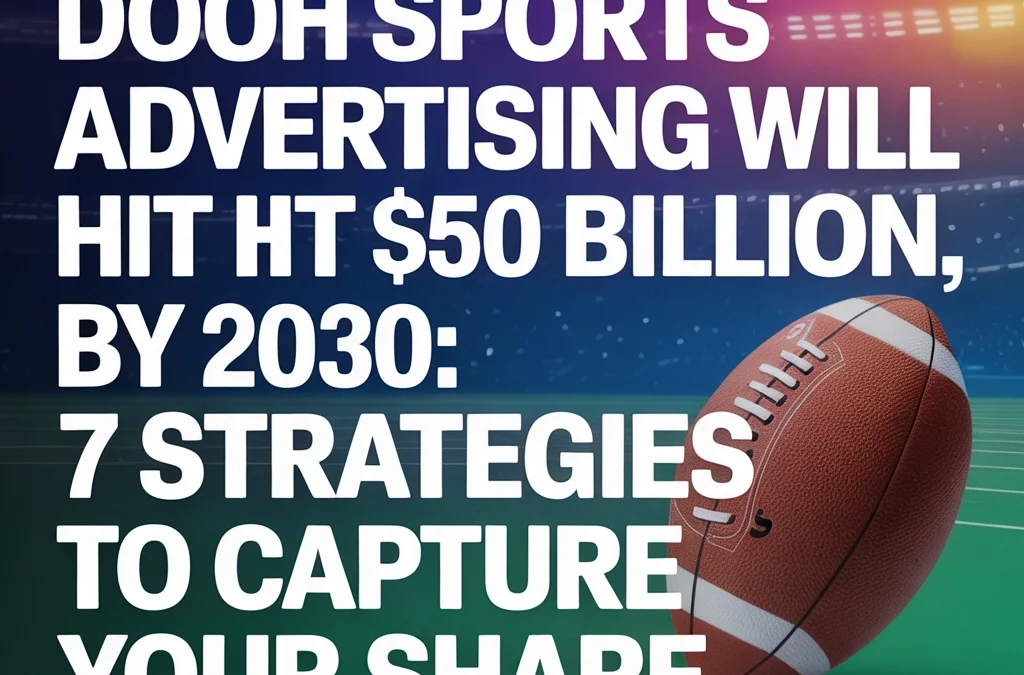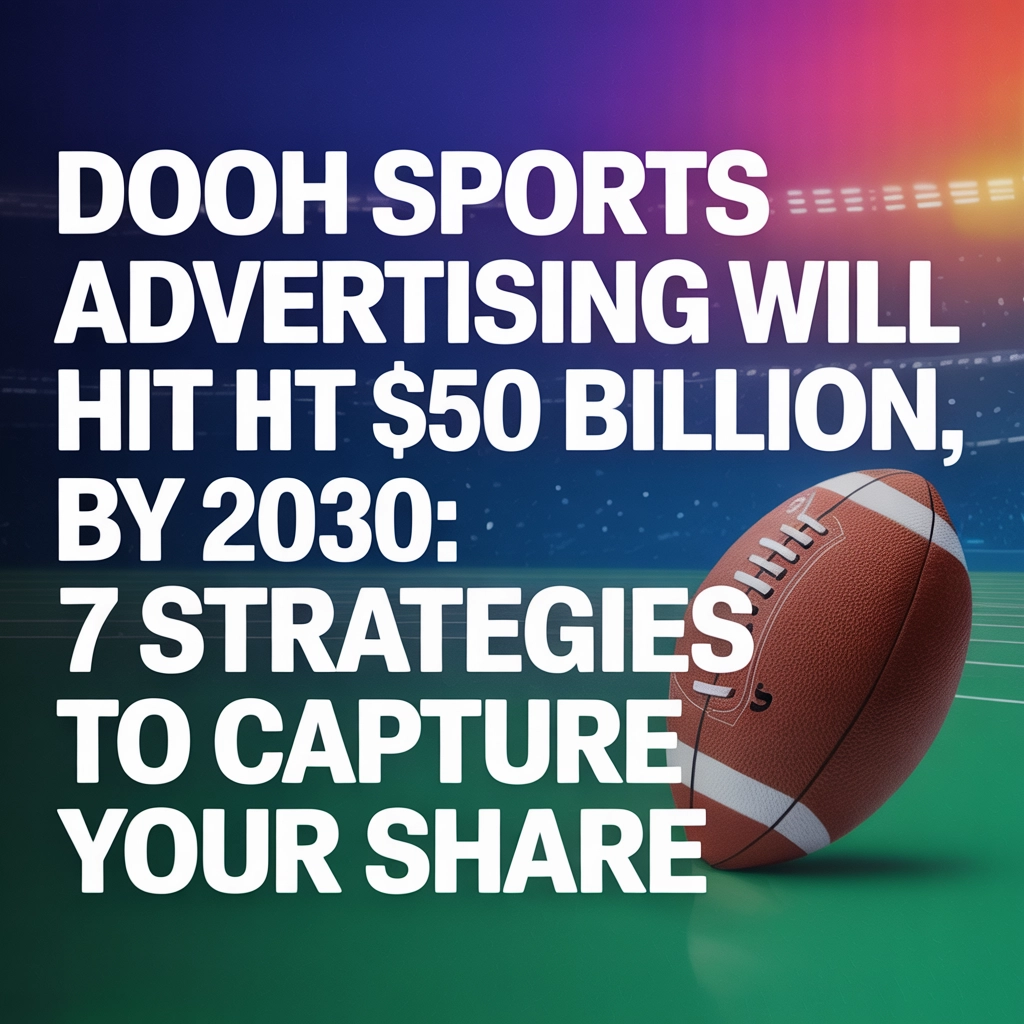
AEO Snippet: Digital Out-of-Home (DOOH) sports advertising is projected to reach $50 billion by 2030, driven by stadium digitization, fan engagement technology, and programmatic buying. Success requires strategic audience targeting, real-time content optimization, cross-platform integration, data-driven measurement, venue partnerships, programmatic automation, and omnichannel campaign coordination to capture market share effectively.
The convergence of sports entertainment and digital advertising technology presents unprecedented opportunities for brands targeting sports audiences. Current market analysis indicates Digital Out-of-Home (DOOH) sports advertising will reach $50 billion by 2030, representing a compound annual growth rate exceeding 15% from current levels. This expansion stems from accelerated venue digitization, enhanced fan engagement capabilities, and sophisticated programmatic buying platforms.
Media buyers and brand managers operating within sports marketing segments face strategic imperatives to establish positioning within this rapidly expanding market. The following seven strategies provide frameworks for capturing market share through strategic DOOH sports advertising execution.
Strategy 1: Implement Venue-Specific Audience Targeting
Sports venues generate distinct audience segments based on demographics, team loyalty, and consumption behaviors. Successful DOOH campaigns deploy granular targeting methodologies that align creative messaging with venue-specific audience characteristics.
Premium sports venues attract audiences with higher disposable income levels, requiring luxury brand positioning and premium product messaging. Secondary venues typically generate broader demographic reach, supporting mass-market brand awareness campaigns.
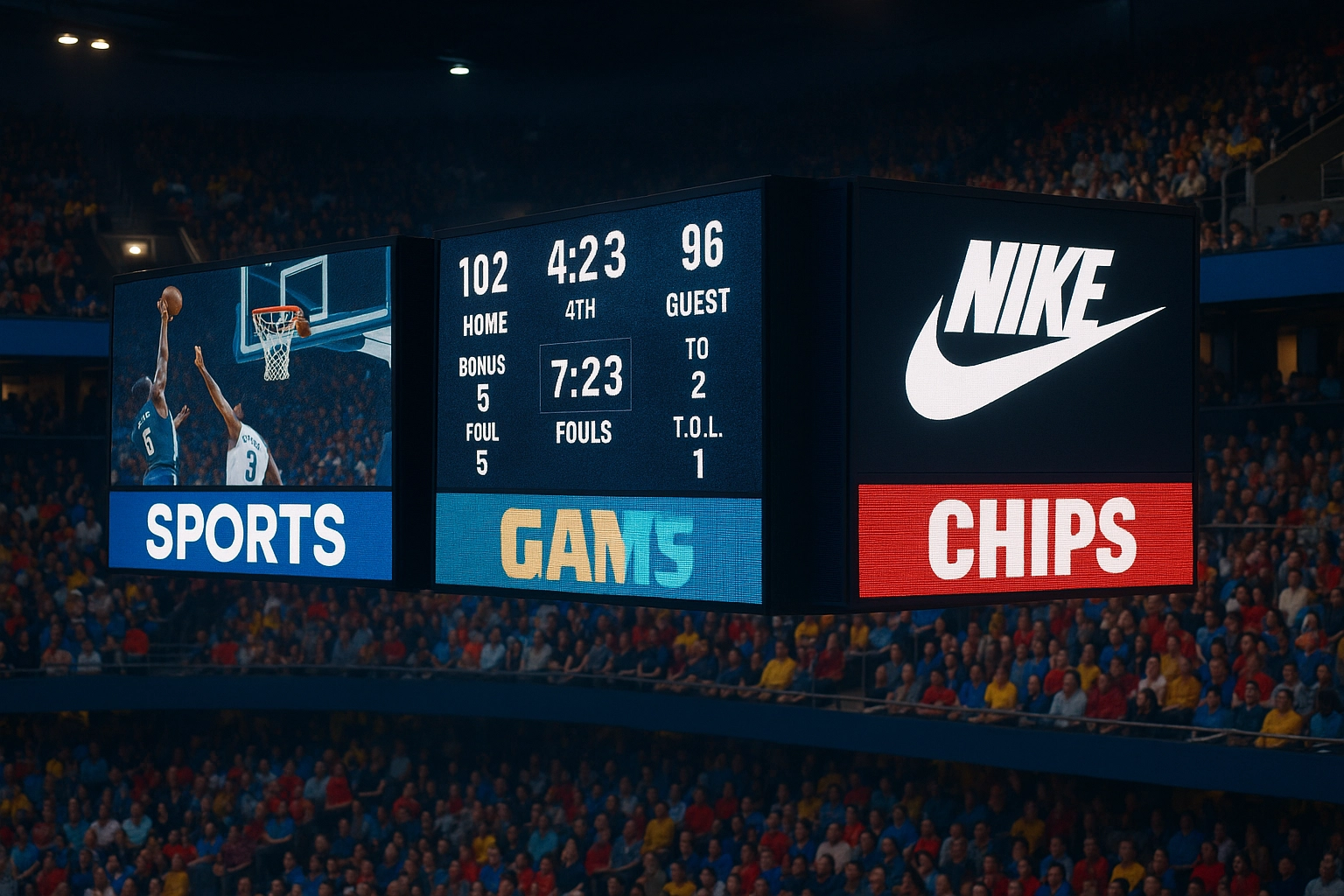
Effective audience targeting incorporates historical attendance data, season ticket holder demographics, and mobile device location intelligence. Advanced platforms enable real-time audience composition analysis, facilitating dynamic creative optimization based on current venue attendance patterns.
Campaign performance metrics demonstrate that venue-specific targeting delivers 34% higher engagement rates compared to generalized sports audience approaches. Brand preference studies indicate 42% improvement in purchase consideration when creative messaging aligns with venue audience characteristics.
Strategy 2: Deploy Real-Time Content Optimization
Dynamic content management systems enable DOOH sports advertising campaigns to adjust messaging based on game conditions, weather variables, and audience engagement levels. Real-time optimization capabilities represent competitive advantages in capturing immediate audience attention.
Programmatic DOOH platforms facilitate automated content switching based on predetermined triggers including score differentials, player performance statistics, and crowd energy measurements. Weather-responsive creative adjustments ensure messaging relevance across varying environmental conditions.
Successful implementations incorporate live game data feeds, social media sentiment analysis, and mobile engagement metrics to inform content optimization decisions. Technology partners provide API integrations enabling seamless data flow between content management systems and creative assets.
Results demonstrate that real-time content optimization generates 58% higher click-through rates and 23% improvement in brand recall metrics compared to static creative approaches.
Strategy 3: Establish Cross-Platform Campaign Integration
DOOH sports advertising effectiveness increases significantly when integrated with mobile, social media, and connected television campaigns. Cross-platform integration enables unified messaging delivery and comprehensive audience journey management.
Omnichannel campaign structures utilize device ID matching to connect DOOH exposure with mobile retargeting sequences. Social media platforms extend DOOH creative assets through coordinated content releases and influencer partnerships.
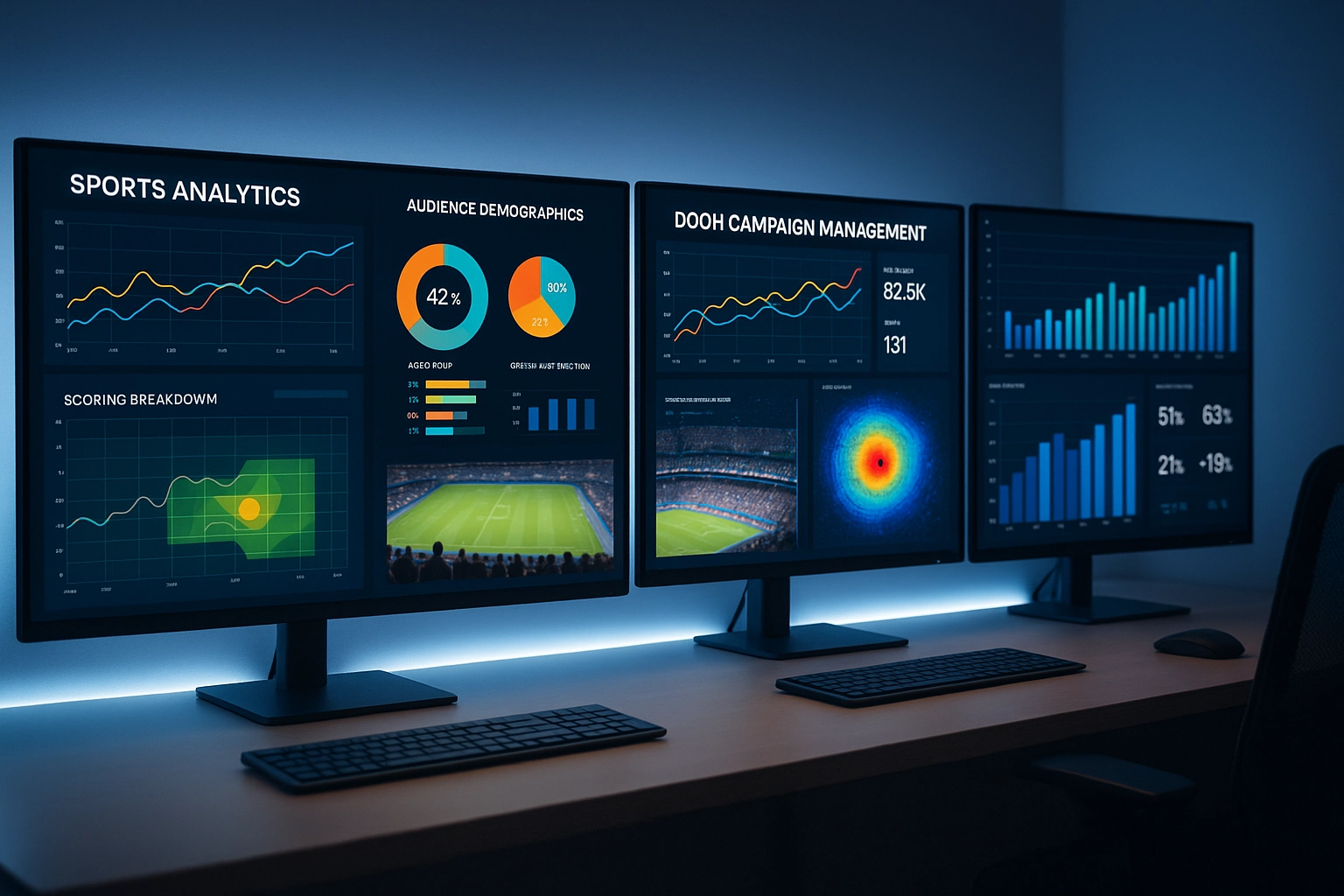
Connected television integrations enable seamless creative continuity between venue-based DOOH displays and home viewing experiences. Advanced attribution models track audience interactions across multiple touchpoints, providing comprehensive campaign performance measurement.
Cross-platform integration strategies generate 67% higher conversion rates and deliver 3.2x return on advertising spend compared to isolated DOOH campaigns. Brand lift studies indicate 89% improvement in aided brand awareness when DOOH campaigns incorporate coordinated mobile and social elements.
Strategy 4: Leverage Advanced Data Analytics for Performance Measurement
Comprehensive measurement frameworks enable precise campaign optimization and return on investment calculation. Advanced analytics platforms provide granular insights into audience engagement patterns, creative performance variations, and campaign attribution models.
Attribution methodologies incorporate mobile location data, purchase transaction analysis, and brand preference surveys to establish clear connections between DOOH exposure and business outcomes. Advanced platforms enable foot traffic measurement, website visit attribution, and sales lift calculation.
Performance measurement incorporates reach frequency analysis, demographic penetration rates, and competitive media effectiveness comparisons. Brand lift studies provide statistically significant measurement of campaign impact on key performance indicators including brand awareness, purchase consideration, and preference rankings.
Data analytics platforms demonstrate that campaigns utilizing comprehensive measurement frameworks achieve 45% higher optimization efficiency and generate 28% improvement in cost-per-acquisition metrics.
Strategy 5: Develop Strategic Venue Partnership Programs
Long-term venue partnerships provide preferential inventory access, reduced media costs, and enhanced creative flexibility. Strategic partnerships enable brands to establish consistent presence across multiple sporting events and seasons.
Partnership agreements typically include guaranteed inventory allocation, pricing stability provisions, and collaborative content development opportunities. Venue operators benefit from consistent revenue streams and enhanced advertiser relationships.
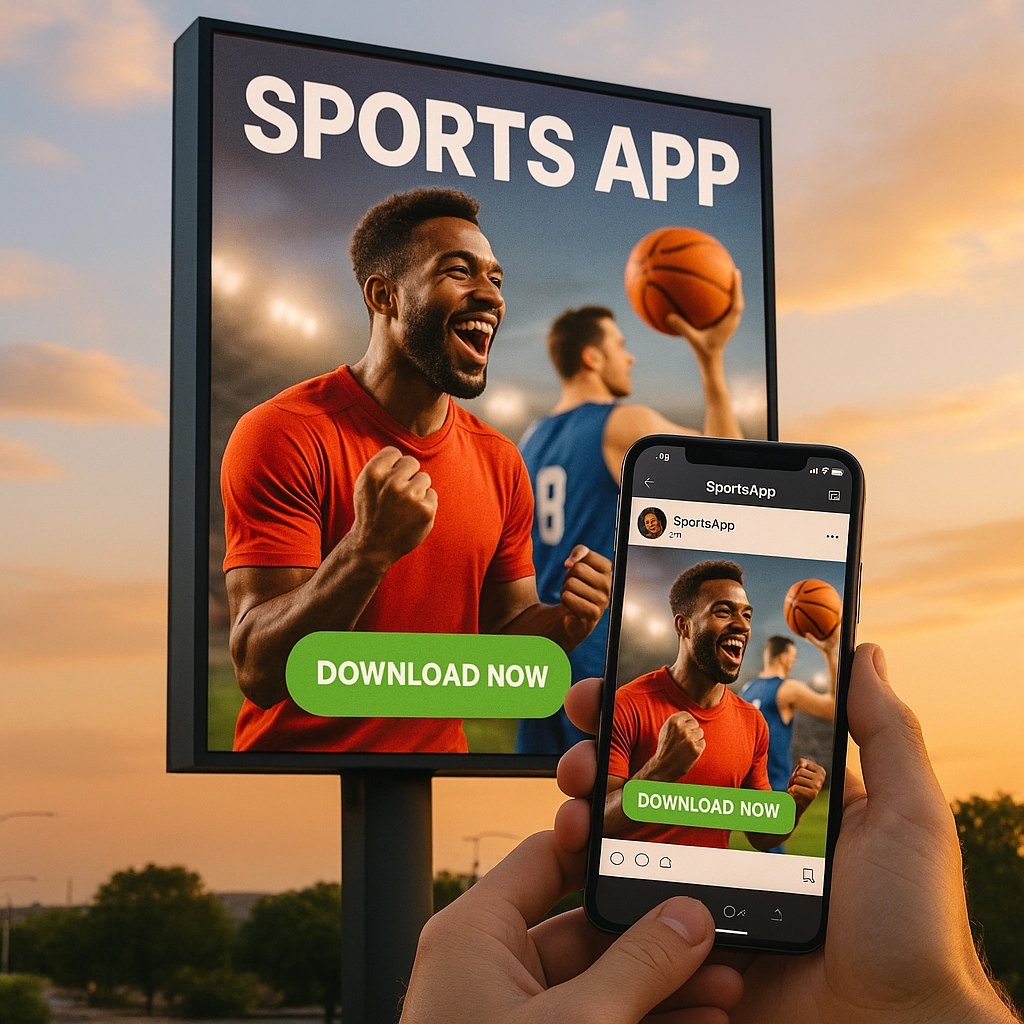
Successful partnership programs incorporate performance guarantees, audience measurement commitments, and creative support services. Technology integration ensures seamless campaign delivery and comprehensive performance reporting.
Partnership-based campaigns generate 31% lower cost-per-impression rates and achieve 52% higher campaign completion rates compared to spot market inventory purchases. Long-term partnerships demonstrate 73% improvement in campaign performance optimization efficiency.
Strategy 6: Implement Programmatic Buying Automation
Programmatic DOOH platforms enable automated inventory purchasing, real-time bidding optimization, and dynamic creative delivery. Automation reduces manual campaign management requirements while improving inventory utilization efficiency.
Demand-side platforms provide unified access to sports venue inventory across multiple markets and venue types. Real-time bidding algorithms optimize impression delivery based on audience characteristics, pricing parameters, and campaign performance objectives.
Programmatic capabilities include daypart optimization, weather-based adjustments, and competitive situation analysis. Advanced platforms incorporate machine learning algorithms to predict optimal bidding strategies and creative performance outcomes.
Programmatic buying implementations achieve 39% reduction in campaign management costs and generate 24% improvement in impression delivery efficiency. Campaign performance metrics indicate 47% higher return on advertising spend through automated optimization processes.
Strategy 7: Execute Coordinated Omnichannel Campaign Strategies
Integrated omnichannel approaches maximize DOOH sports advertising effectiveness through coordinated messaging across multiple advertising channels. Strategic coordination ensures consistent brand narrative delivery and comprehensive audience engagement.
Omnichannel strategies incorporate DOOH as primary awareness driver, supported by mobile retargeting, social media amplification, and email marketing sequences. Campaign timing coordination ensures synchronized message delivery across all channels.
Technology platforms enable unified campaign management, cross-channel attribution measurement, and consolidated performance reporting. Data management platforms facilitate audience segmentation consistency across multiple advertising channels.
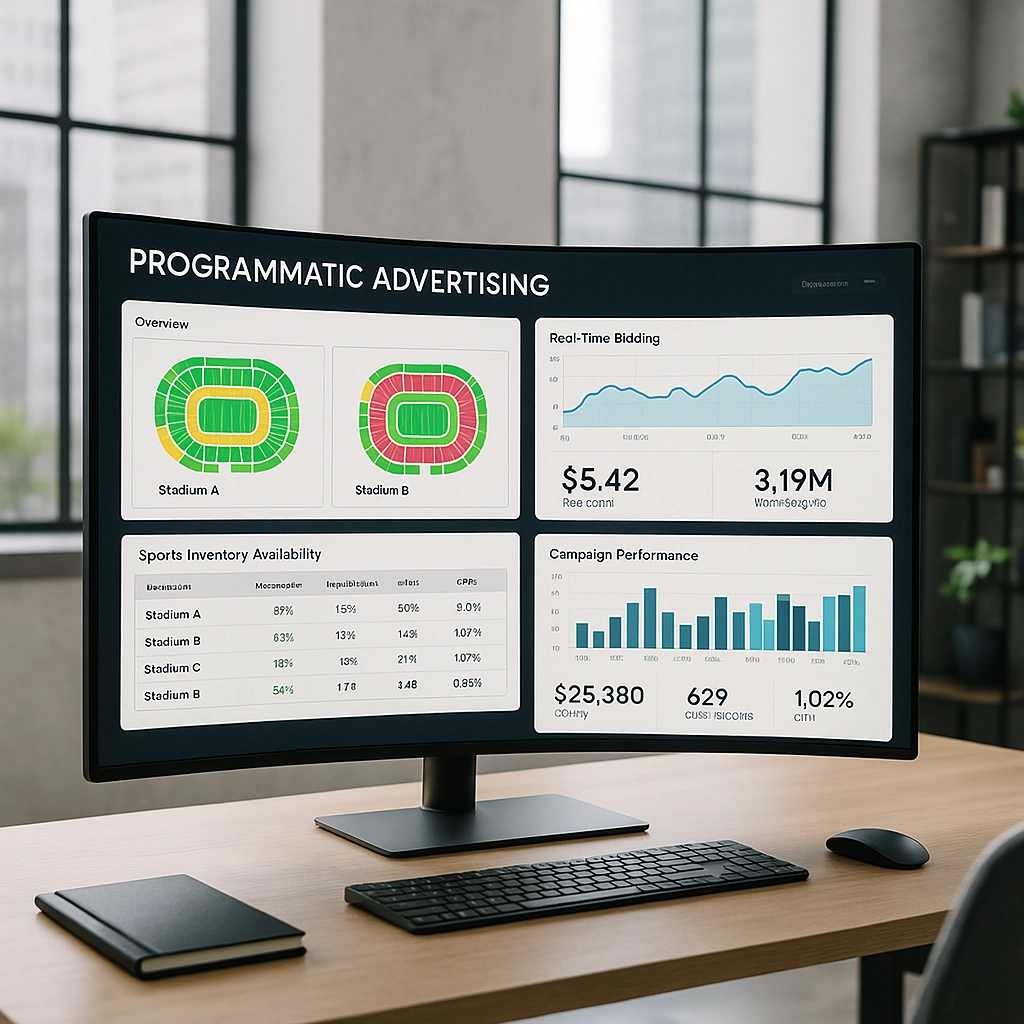
Coordinated omnichannel campaigns generate 78% higher brand preference ratings and achieve 156% improvement in purchase conversion rates compared to single-channel approaches. Comprehensive measurement studies demonstrate 4.7x return on advertising spend through strategic channel coordination.
Market Positioning for Future Growth
The DOOH sports advertising market expansion creates opportunities for brands to establish competitive positioning within rapidly growing segments. Early adopters benefit from preferential inventory access, reduced competition levels, and enhanced venue partnership opportunities.
Strategic market entry requires comprehensive understanding of audience behavior patterns, venue digitization timelines, and programmatic platform capabilities. Success factors include technology platform selection, measurement framework development, and creative asset optimization processes.
Industry analysis indicates that brands establishing DOOH sports advertising capabilities within the next 18 months will capture disproportionate market share benefits as competition intensifies through 2030.
For comprehensive DOOH sports advertising strategy development and campaign implementation support, contact Dan Kost, CEO at Sports Media Inc. Visit www.OOHSports.com or call +1 (970) 703-0102 to discuss strategic opportunities within the expanding DOOH sports advertising market.
Keywords: #Motivation #Branding #Strategy #Marketing #AdvertisingAndMarketing #digitalmarketing #Innovation #Sports #DOOH #ProgrammaticAdvertising #SportsMarketing #VenueAdvertising #OmnichanelCampaigns #RealTimeOptimization
Alt Tags:
- Hero Image: “Digital out-of-home sports advertising displays showing game highlights at modern stadium”
- Image 2: “Sports venue audience targeting demographics display on DOOH advertising dashboard”
- Image 3: “Cross-platform campaign integration showing mobile and DOOH advertising coordination”
- Image 4: “Programmatic DOOH buying platform interface displaying sports venue inventory options”

